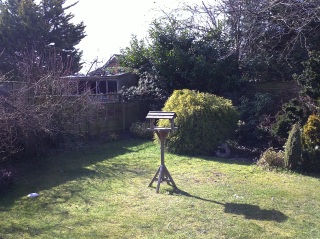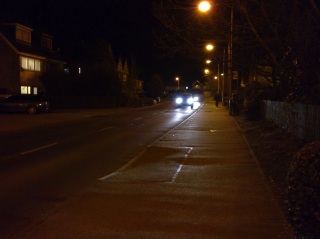Review: Sony Ericsson Vivaz - part 2 (camera and camcorder)
In the second part of his review of the Sony Ericsson Vivaz (here's part 1), Steve Litchfield looks at the Vivaz's unique selling point, its very good camera and camcorder capability. Just how good (or bad) is it in practice and is there anything else you should know about the Vivaz's camera arrangements?
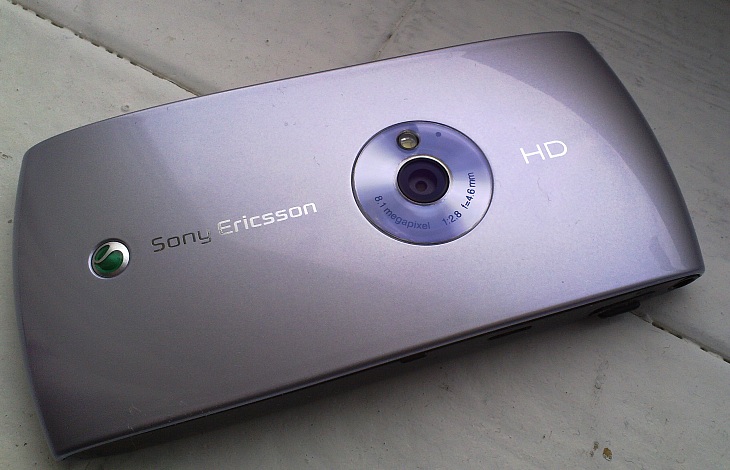
Watch the Vivaz commercial and you'll see that the HD video recording is THE feature that Sony Ericsson are shouting about. Fair enough, though it should be noted that the stills camera is pretty hot too - in most light conditions possibly the best 8 megapixel phone camera I've tried. All of which is surprising, given the dimunitive size of the Vivaz - the lens used and (more importantly, I suspect) the sensor and supporting electronics inside are obviously of very high quality. I'm expecting the Vivaz's camera specs to be matched by other phones throughout 2010, but credit to this model for being first on the block.
As mentioned in part 1, the camera glass is that of the camera itself, since this 'pokes through' the back cover, avoiding having yet another layer of plastic between the outside world and the camera lens. 1 step forwards but then another step backwards for having such fragile and important optics exposed at all on a top-flight camera phone. Especially as the glass is very, very close to the centre of gravity when placed on potentially dirty and gritty desks and furniture.
The camera interface is very different from that in Nokia's S60 5th Edition phones, as you can see here. In Samsung-style, icons are placed along the left and right edges, for easy control. And, aside from the missing 'flash' option (of which more below), everything you'd ever need is here. Working my way anti-clockwise round the standard camera interface:
- 'Scenes' (Night, Sports, etc)
- 'Shooting mode' (Normal, panoramic, smile detection and touch-to-focus, this last being unique in the Symbian smartphone world so far, another Vivaz first)
- 'Focus' (Auto, Face detection, Macro, Landscape)
- 'Exposure'
- 'Auto' mode on/off (this hides all the above and simplifies things for the real novice)
- 'Settings' (self-timer, resolution, light (of which more below), white balance, image stabilisation, special effects, geotagging, etc.)
- 'Media' (shortcut to your latest photos and videos)
- 'Back' (to whatever was in the foreground before you launched the Camera software)
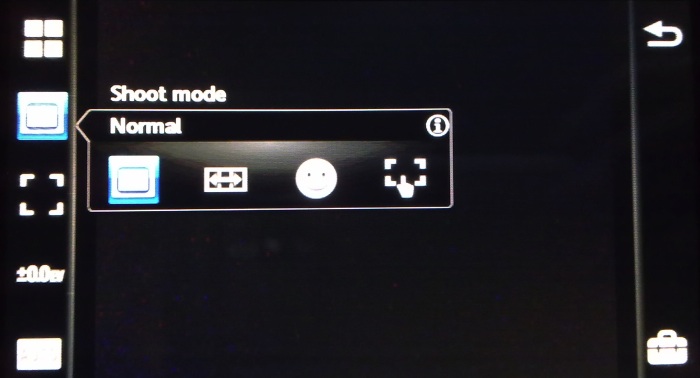
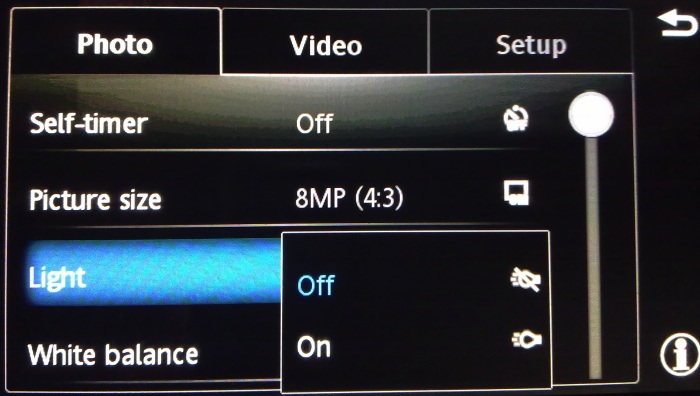
So pretty comprehensive (with the one exception) and easy to use. Mind you, I also found Nokia's camera interface easy to use - they're just different.
Looking at results, the 8 megapixel photos are, in good light, superb, as you can see here (click through to enlarge or download the original JPG):
Now for a few shots that didn't work as well:
In each case, there's over-exposure and a degree of lens flare, typical for camera glass which is normally left unprotected - microscratches then refract strong light and cause the flare.
I was curious about pitching the Vivaz against a previous 8 megapixel champion - the Samsung i8510. Specifically looking at resolution, detail and handling of light and dark. I took three test scenes with each device, with absolutely everything identical in terms of camera position and time.
Firstly, I took a shot of a tree about 30 metres away, against a gorgeous blue sky, and then examined the branch detail at 1:1 level (remember, on an 8mp photo, this is zoomed in a long way). On the left is that from the Vivaz, on the right is the detail from the i8510:
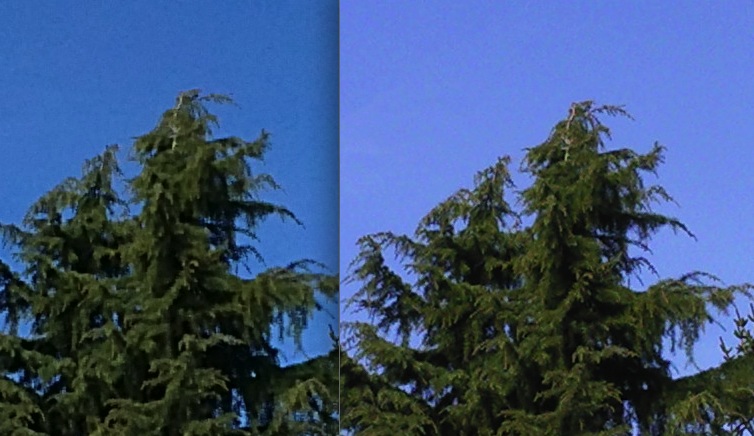
The Vivaz's photo is definitely inferior, partly due to levels of Nokia-esque digital processing and sharpening - which typically hate capturing greenery, with all that inconvenient similarly-coloured detail. Onto another test, this time in indifferent indoor lighting conditions:
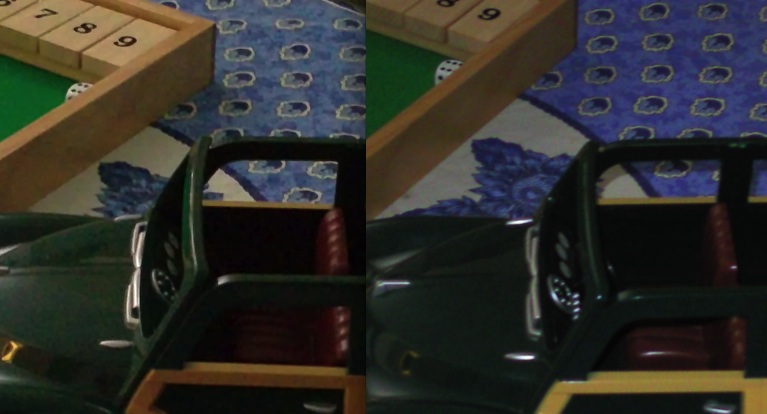
Here the tables are, arguably, turned, with the Vivaz's algorithms turning up better clarity and more accurate colours. We're heavily into the law of diminishing returns here, in that different shots will turn up a different winner. The Samsung i8510 seems to take better photos in good light, though with colours that are a bit over-saturated, while the Vivaz is pretty good outdoors but excels (compared to other phone cameras) indoors. It's true that Vivaz photos in poor light are less impressive than in good light - insert my usual need-for-Xenon-flash-rant in here.... but the sensor in the Vivaz does a lot better than most phones I've tried. Here's a sample taken in artificial light, the room bulb was only 60W, and yet the digital noise is very low...
(Again, click through to download or enlarge)
Here are some more low light photos for you to download/enlarge and examine:
Not at all bad, which got me thinking that I'd like to pitch the Vivaz against the Nokia N86, the previous low light champion (on account of its great sensor and variable aperture). Here are shots of the same test shelf of cuddly toys, this time taken in low natural light, in this case with curtains closed - it was darker than it looks from the photos. First up is the Nokia N86's attempt, with LED flash turned off:

Then the Vivaz's capture of the same scene:

Quite a difference, showing how good the Vivaz's camera sensor is. Remember that the N86 was the previous low light (i.e. no flash) champion.
However, the low light performance is just as well, since the Vivaz lets the user down horribly once things get even darker. Unbelievably, there's no traditional flash here at all. The LED is pitched as a 'light', the idea being that you're in a dark place so you delve into the menus to turn on the 'Light' setting, at which point the LED is lit up to dazzle everyone around you while you wave the Vivaz around in search of a good snap.
It's an insane setup - I can only think that the designers of the Vivaz reasoned that the sensor's low light performance was so good that flash wouldn't often be needed. Which in a sense is true. But it's not going to stop you cursing those same designers when you're standing outside the pub at closing time, trying to get a photo of your new found drinking friends. And have to fumble inside 'Settings|Photo' to turn 'Light' on, followed shortly by your probably inebriated friends squinting painfully into your video light and looking like they're having a very bad time indeed.
I'm sure that Sony Ericsson can fix this in firmware, but the current situation is very disappointing.
Video capture is the Vivaz's real party trick though, being the first phone in the world to feature continuous autofocus, as far as I know, and certainly the first to combine that with full HD (1280 by 720 pixels, aka '720p') recording. This results in an incredible 100MB or so of footage per minute - in a real world environment, you're probably going to have to 'up' your microSD card size if you want to be ready for serious video. This is one area where the lack of a mass memory disk is really noticed - a 16GB internal disk would make all the difference in terms of capacity and usability, with your usual 8 or 16GB for music and podcasts (etc) on microSD. Ah well. Another compromise by Sony Ericsson, I feel.
There's a compilation of my 720p footage below, firstly in reduced/embedded (VGA) YouTube format - click on it and then on 'Watch on YouTube'. Once on YouTube, select '720p' and then go full-screen. Captured videos have now got too large for simply embedding in normal web pages! 8-) I've also given you a link to the 'raw' (edited) HD clip below the embed. Just right-click that to download. It's not raw footage from the Vivaz, as it has been assembled from several clips, but it's as close as you'll get to seeing raw quality. Anyway, YouTube or .MOV download - take your pick now!
So, start watching above and click through to 'Watch on YouTube' at the highest quality you can - OR...
Video quality is obviously some way off that of a traditional HD camcorder, but then we're talking about a tiny lens. Some of my test clips have small stutters where frames were dropped - this is the sort of thing that would get smoothed out in future firmwares - hopefully. Capturing and encoding almost 2MB of video per secondusing just a phone processor and electronics is obviously not a trivial task - but the Vivaz is very, very close to doing a good job here.
Aside from raw resolution, the Vivaz's main party trick is the unique continuous auto-focus. I've written about this before, but let me summarise. Most phones simply shoot with infinite focus, with the result that close up objects (pets, people) are somewhat blurry. A few phones (e.g. N95, N82, N86, i8910 HD in the Symbian world) shoot with a 'preset-focus', i.e. focus is set to a metre or two, with enough depth of field in good light that stuff in the distance is also crisp enough. And a few phones (e.g. Apple iPhone 3GS, Nokia N900) use 'pre-focus', wherein you focus at the start of a video clip and this is then maintained throughout capture. This works well in some cases, but has the obvious disadvantage that when you start filming on one subject and then pan away you can end up with terrible results.
So, going to full autofocus is something smartphone cinematographers like myself have been waiting for with baited breath. And on the whole, I've not been disappointed. As you'll see from the footage above, refocussing is as quick as many standalone camcorders and about as reliable. And makes the Vivaz stand out as a great video capture device, with the only negative being the poor contrast of the display outdoors, as mentioned in part 1 of this review. Not being able to see what you're shooting in bright sunlight is a problem. Oh for a transflective screen, Sony Ericsson....
In poor light, there's the same somewhat anaemic LED 'Light' featured in the stills camera, again guaranteed to make all your subjects squint(!) Good as the sensor is in the Vivaz, the laws of physics dictate that a phone-mounted sensor won't be able to keep quality high when there's not enough light to gather in each 1/25th of a second (i.e. per frame). Still, as with the Nokia N86, at least you'll get a video at night, whereas most phone cameras would end up shooting dark grey subjects on a black background.

In summary, the camera functions do justice to the Vivaz's marketing and, provided the rest of the hardware and software appeals, mean that this is a natural choice for anyone keen on capturing stills and video.
|
Pros: Great stills quality in good or indifferent light Good camera interface with cutting edge options, including touch-to-focus and smile detection Good 720p video (for a phone), with really usable continuous autofocus |
Cons: No camera glass protection No conventional LED flash for low light stills Choice of screen tech means that it's hard to see what you're shooting when the sun's out |
Next is a look at the Vivaz's custom homescreen and media suite in part 3 of this extended review, followed by a look at its use as a general smartphone, looking at its apps and idiosyncrasies, in the final part 4.
Steve Litchfield, All About Symbian, 17 March 2010
See also
Sony Ericsson Vivaz Review - part 1
Videos: Vivaz Design choice, Vivaz Colours and Vivaz versus Vivaz Pro
Videos: Vivaz demo and Vivaz UI changes from Satio
Reviewed by Steve Litchfield at






